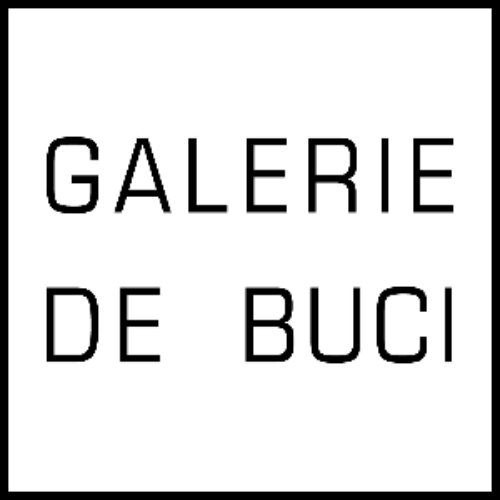The Animal Gaze
How Artists Have Represented Animals Throughout History
Diego Velázquez, Head of a Stag, 1626-1636
Photo: Museo del Prado
In line with the exhibition “Personal Story” by Maxime Vardanian, in which several portraits of dogs are featured, we are dedicating today’s article to exploring how artists have represented animals in their works, throughout eras and in different mediums.
Throughout history, animals have been a central subject in artistic representation, serving as symbols, allegories, and even reflections of human identity. From sacred depictions in ancient Egypt to hyperrealist installations in contemporary art, the way humans have portrayed animals reveals much about their cultural, scientific, and philosophical perspectives.
The Gayer-Anderson Cat (c. 600 BCE)
One of the most famous representations of a feline in art history, the Gayer-Anderson Cat is a striking example of how animals were revered in ancient Egypt. This bronze sculpture, adorned with gold earrings and a nose ring, reflects the Egyptians' deep spiritual connection to cats, who were seen as protectors and embodiments of the goddess Bastet. Cast in bronze using the lost-wax technique, the statue was likely created around 600 BCE and later discovered in Saqqara, an ancient burial ground in Egypt. It is now housed in the British Museum. The figure’s finely detailed craftsmanship, including engraved fur markings and inlaid eyes, suggests it was a votive offering or a household idol, symbolizing divine protection and fertility. More than a mere representation of an animal, this statue reveals the divine status attributed to certain creatures, elevating them beyond the earthly realm.

The Gayer-Anderson Cat (c. 600 BCE)
Photo: Einsamer Schütze
Photo: Einsamer Schütze
Dürer’s Rhinoceros (1515)
Albrecht Dürer’s Rhinoceros is one of the most famous animal illustrations of all time, despite the fact that the artist never actually saw a rhinoceros in person. Based on written descriptions and sketches from others, Dürer’s woodcut shows a heavily armored, almost mythical beast. This work highlights the Renaissance fascination with the natural world and the way artists sought to document exotic creatures, even if accuracy was sometimes sacrificed for artistic interpretation. Dürer created the woodcut using traditional engraving techniques, meticulously carving the image into a wooden block before inking and printing it. The illustration was first published in 1515 as a broadside, accompanying a letter that described the arrival of the rhinoceros in Lisbon. Over time, it became one of the most widely reproduced animal images of the early modern period, influencing both scientific and artistic depictions of the species. The Rhinoceros remains a testament to how artistic imagination shaped early scientific representation.

Albert Dürer, The Rhinoceros, 1515
Photo: Ant 222
Photo: Ant 222
Whistlejacket (1762)
George Stubbs’ Whistlejacket is an extraordinary example of 18th-century equine portraiture. Unlike traditional horse paintings that often depict riders or elaborate landscapes, Whistlejacket presents the animal in isolation, against a stark background, showing the Marquess of Rockingham's racehorse approximately at life-size. This composition elevates the horse to a position of power and majesty, celebrating its grace and vitality. Stubbs’ attention to anatomical precision also reflects the Enlightenment era’s interest in scientific observation, blending realism with a sense of grandeur. Stubbs was an experienced horse portraitist, drawing inspiration from the equine studies of Rubens and Velázquez. The absence of a background in Whistlejacket strips away any contextual distractions, forcing the viewer to focus solely on the horse’s form and expression. This lack of setting enhances the sense of monumentality and movement, making the painting feel almost sculptural in its presence.

George Stubbs, Whistlejacket, c. 1762
Photo: The National Gallery
Photo: The National Gallery
Tiger in a Tropical Storm (1891)
Henri Rousseau’s Tiger in a Tropical Storm (Surprised!) brings a more dreamlike and psychological approach to animal representation. Unlike the scientific studies of his predecessors, Rousseau’s tiger is a creature of fantasy, set within a lush and exaggerated jungle. The dramatic use of color and light, along with the tiger’s almost human-like expression, turns the painting into a theatrical moment rather than a strict representation of nature. Rousseau was initially refused entry into the Salon and had to exhibit with the Independents, a group that embraced non-traditional artists. Fin-de-siècle Paris was fascinated with exoticism, and his depictions of lush, tropical environments fit within this cultural trend. However, in reality, Rousseau never traveled to the jungle; his inspiration came from botanical gardens in Paris, such as the Jardin des Plantes. This work highlights the Symbolist movement’s fascination with the exotic and the untamed, exploring how animals can evoke both fear and wonder.

Henri Rousseau, Tiger in a Tropical Storm (Surprised!), 1891
Photo: The National Gallery
Photo: The National Gallery
Royal Dog (1989)
Maxime Vardanian’s Royal Dog continues the tradition of elevating animal portraiture beyond mere representation, imbuing it with a regal and almost human-like presence. The painting presents a noble hound, its poised stance and commanding gaze recalling the grandeur of historical equestrian portraits. Like the aristocratic subjects of centuries past (which are also hinted at with the three small portraits on the top-left corner), this dog is depicted with an air of dignity and authority, suggesting that the artist sees animals not as passive beings but as creatures with their own status and identity. Vardanian’s use of bold, expressive brushstrokes and a rich color palette enhances the sense of movement and vitality in the composition. The painting’s background, in bold shades of pink and red, adds a striking contrast that heightens the intensity of the subject. This vibrant backdrop directs all attention to the animal’s character, reinforcing the idea that portraits—whether of humans or animals—serve as powerful statements of personality and presence.

Maxime Vardanian, Royal Dog, 1989
Photo: Galerie de Buci
Photo: Galerie de Buci
Damien Hirst’s Shark (1991)
With The Physical Impossibility of Death in the Mind of Someone Living, Damien Hirst presents a preserved tiger shark suspended in formaldehyde, challenging traditional notions of animal representation. Unlike paintings or sculptures that celebrate the form and essence of animals, Hirst’s work provokes a visceral reaction, forcing the viewer to confront mortality and the nature of spectacle. The shark, once a powerful predator, becomes an eerie and lifeless object, reflecting contemporary anxieties about life, death, and the way humans control and display nature. Hirst is a prominent member of the Young British Artists (YBAs), a group known for their provocative and conceptual approach to art. This work was commissioned by Charles Saatchi, a major collector and patron of contemporary art, further solidifying its place in modern artistic discourse. At some point, due to the natural deterioration of the original shark, it had to be replaced with another, raising questions about authenticity and the nature of conservation in conceptual art.

Damien Hirst, The Physical Impossibility of Death in the Mind of Someone Living, 1991
Photo: https://www.icon-icon.com/en/damien-hirsts-shark/
Photo: https://www.icon-icon.com/en/damien-hirsts-shark/
From sacred idols to scientific documentation, from symbolic fantasies to conceptual provocations, animals have continuously shaped and reflected human thought through art. The progression of these works demonstrates shifting attitudes toward the animal kingdom—sometimes as divine beings, sometimes as subjects of study, and sometimes as metaphors for human experience. As artistic representations evolve, they continue to reveal as much about the artists and their societies as they do about the creatures they depict. Come see the exhibition "Personal Story" at the Galerie de Buci to see some animal portraits by artist Maxime Vardanian!

